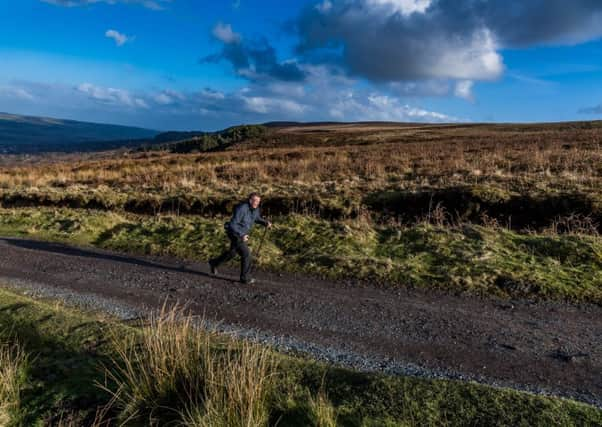Is the Romans' greatest legacy found in our countryside?


Lovers of Monty Python will understand my reason for laughing aloud. I had just remembered John Cleese famously asking “What have the Romans ever done for us?” And I had thought, well they did build this incredible road.
Or did they? I was following what some historians believe to have been one of their main highways over the Dales, and it had occurred to me that the greatest legacy of the Romans’ occupation of Britain between AD 43 and AD 410 is their splendid network of roads.
Advertisement
Hide AdAdvertisement
Hide AdThis one runs south from Bainbridge, the location of a Roman fort known as Virosidum. It was thought to connect with another fort at Ilkley, believed to have been called Olicana, but that is now questioned by some historians. What is clear though, is that the stretch I was walking along at least bore the characteristics of a straight Roman road. And as I followed it over the limestone pavement on Stake Moss and dropped down to Shaw Gate at the head of Cragdale to look over the slate-blue sheet of Semerwater, I liked to think that I was taking in views that would have been enjoyed by marching legionaries all those centuries ago.
Other Roman routes in Yorkshire were less scenic but more vital to their communications network. The best known was Ermine Street, which linked York (Eboracum) with London (Londinium) via Lincoln (Lindum Colonia) and became the template for the Great North Road, later designated as the A1. Northwards from York ran another Roman road called Dere Street.
However, many so-called Roman roads haven’t stood the test of time. My copy of Roman Yorkshire by F. R. Pearson, senior history master at Bridlington School when it was published in the 1930s, unequivocally attributed to the Romans a road across the Pennines at Blackstone Edge, describing it as “one of the finest continuous stretches of well-preserved Roman pavement to be found in England”.
He added that its direct course and elaborate construction “leave little doubt in the mind of the unbiassed observer as to its true character”. More recent opinion, though, suggests it might have been nothing more than a 19th century moorland track used for the quarrying of stone.
Advertisement
Hide AdAdvertisement
Hide AdAlso questioned in recent years is the status of the mile-long stretch of road known as Wade’s Causeway on Wheeldales Moor in the North York Moors. Archaeologists concluded that it resembled the structure of other Roman roads, but now English Heritage has called for further excavations and an aerial survey.
So in Yorkshire at least, the question “What have the Romans ever done for us?” might now be answered with “they left behind a fair amount of controversy and confusion”.